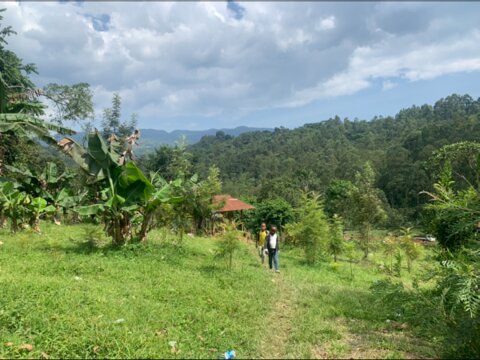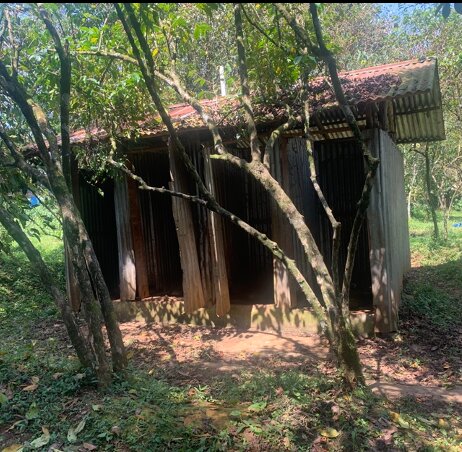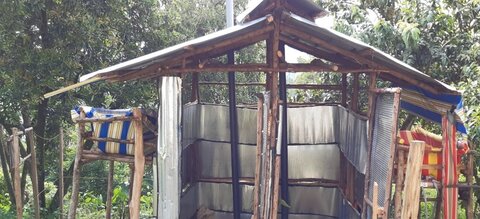Blog | Safety, Sanitation and Sustainability: World Toilet Day 2021
As we mark the United Nations World Toilet Day, The NNN WASH Working Group would like to shine a light on the staggering 3.6 billion people worldwide who continue to live without safely managed sanitation - a crucial player in the fight towards eliminating neglected tropical diseases (NTDs) (1).
The NGO NTD Network (NNN), uniquely positioned to address the need for cross-cutting approaches, includes through several Working Groups, one of which focuses on water, sanitation, and hygiene access (WASH). The WASH Working Group, made up of approximately 50 members, works to advocate, guide, and support collaboration between the WASH and NTD sectors. Alongside advocacy, providing technical guidance across the sectors, supporting the WHO WASH Department to promote relevant opportunities and the WHO NTD Department in integration of WASH and NTD services, we also look to our individual members to improve and guide our network on solutions for access to clean and safe water and sanitation for all. One such member is NALA Foundation, an expert in behaviour change communication, and a leader in WASH-NTD intersectoral coordination.

During the NALA team’s recent visit to the Bench Sheko zone, located in Southern Ethiopia, they saw first-hand that the state of the school toilets was highly inadequate. They lacked sufficient ventilation and light, which created strong odours and dark areas, compromising young childrens’ safety, and the ratio of children to toilets was extreme. In the schools they visited there was approximately one toilet per one hundred students, with little privacy to use them.
Furthermore, the team noticed a lack of running water sources by latrines, limiting the ability of children and staff to properly wash their hands after using the bathroom and clean the bathrooms sufficiently. The unclean state of the toilets was therefore leading to high levels of open defecation around the parameter of the toilet block.
The link between sanitation and health

The lack of safe toilets in schools not only threatens a child’s, but the entire community’s health.
Poor sanitation leads to the contamination of water sources used for drinking, washing, and bathing through rainwater flushing faecal matter into rivers and streams. Such contaminated water is then a source of transmission of soil-transmitted helminths (STH) and schistosomiasis. Furthermore, open defecation and unclean toilets acts are a breeding ground for flies, which spread trachoma, a disease that is endemic in Ethiopia.
A 2016 paper by Grimes et al. presented strong evidence that WASH was linked to levels of soil-transmitted helminths (STH) and schistosomiasis prevalence in schools in Ethiopia (3). The greater the access, the lower the levels of these infections.
Another 2013 study in Kenya found that improved latrines and lower ratios of children to latrines would reduce open defecation in and around the school compound, leading to a reduction in the transmission of intestinal parasites (4).
Innovative Solutions

During Nala’s visit to an elementary school in Kite, Bench Sheko, the head of the zonal health department explained that “we cannot progress in the fight against NTDs without adequate latrines in schools […] the materials and labour we can supply, but the funding and design we need your help with.”
The need for better sanitation and hygiene services in the fight against NTDs is clear and the NNN WASH Working Group continues to develop guides and toolkits for intersectoral coordination. In addition to these materials, NALA is proposing two simple and effective interventions that could address issues on the ground:
- The first is the need for better latrine facilities; NALA has previously designed and built two innovative latrines for the zonal health department in Mizan Aman, which after several years remain in a good condition. The experimental latrine consisted of several components, including two holes separated by a plastic flap to reduce fly infestation, a sloping floor to aid with cleaning, a rain harvesting system for sanitation and cleaning and a vent pipe for removing odour. Moreover, these latrines are built from relatively cheap locally sourced materials, such as corrugated iron sheets, making them a suitable design for rural areas.
- Second, in response to the desperate need for running water sources in schools, NALA came up with a novel, cost-effective concept. A visit in 2019 by experts from Ethiopia, Israel and America revealed that WASH infrastructure did exist, but it was non-functional due to ageing and lack of maintenance. The WASH on Wheels project, launching this year in Ethiopia, aims to address the lack of running water through a mobile WASH clinic equipped with necessary materials and staffed with locally hired technicians to provide simple fixes and train an appointed staff member from each school in addition to an individual from the water office on how to maintain the infrastructure.
At the end of the project, in addition to the materials that will be given to schools, a standard maintenance kit and manual for commonly occurring problems will be created and delivered at the district level, alongside a training program, for ensuring sustainable infrastructure upkeep.
The project aims to reach 500 schools in two regions of Ethiopia over the course of one year, bringing running water to approximately 500,000 school-aged children. If the project is successful, with the support of the NNN wider network, the blueprint will be offered to all national and international partners and organisations for replication.
The problem is clear, the intervention is simple, and the impact can be unimaginable.
Bibliography
Learn | World Toilet Day [Internet]. [cited 2021 Nov 14]. Available from: https://www.worldtoiletday.info/learn-2021
Trachoma [Internet]. [cited 2021 Nov 14]. Available from: https://www.who.int/news-room/fact-sheets/detail/trachoma
Grimes JET, Tadesse G, Mekete K, Wuletaw Y, Gebretsadik A, French MD, et al. School Water, Sanitation, and Hygiene, Soil-Transmitted Helminths, and Schistosomes: National Mapping in Ethiopia. PLOS Neglected Tropical Diseases [Internet]. 2016 Mar 8 [cited 2021 Nov 14];10(3):e0004515. Available from: https://journals.plos.org/plosntds/article?id=10.1371/journal.pntd.0004515
Garn J v., Greene LE, Dreibelbis R, Saboori S, Rheingans RD, Freeman MC. A cluster-randomized trial assessing the impact of school water, sanitation and hygiene improvements on pupil enrolment and gender parity in enrolment. Journal of Water, Sanitation and Hygiene for Development. 2013 Dec 1;3(4):592–601.